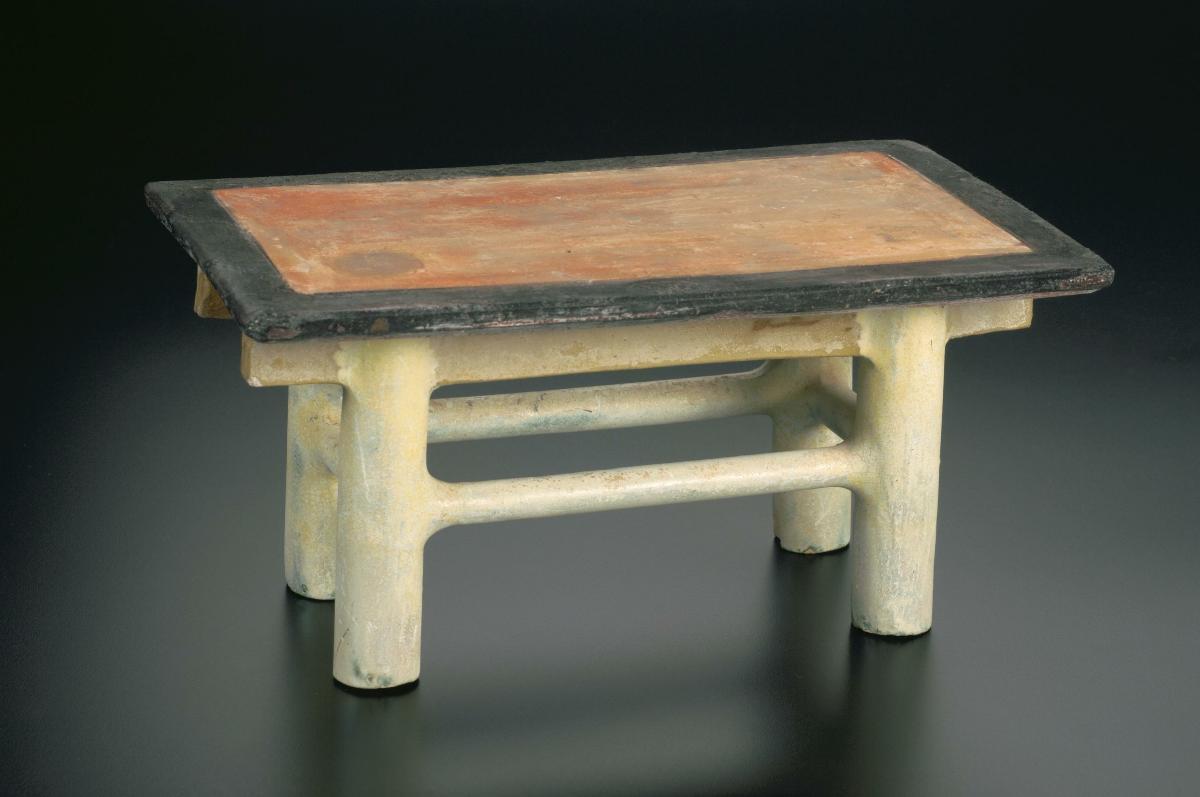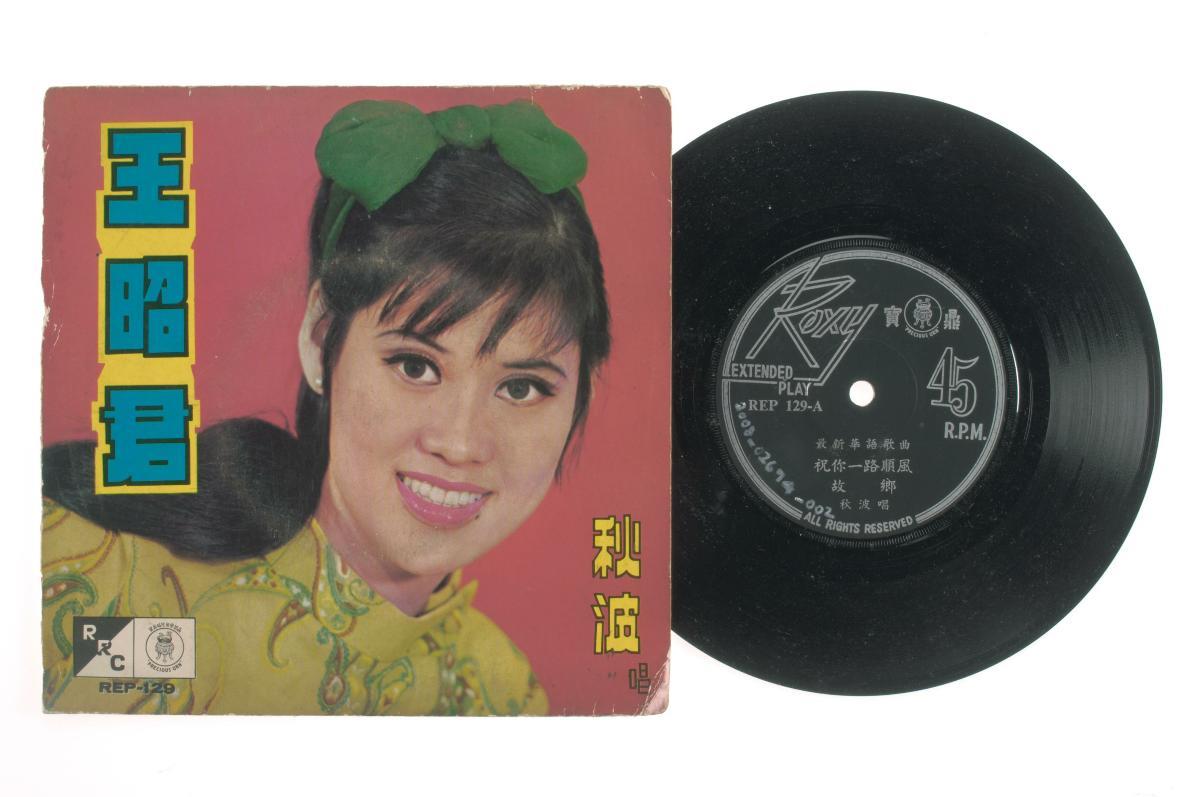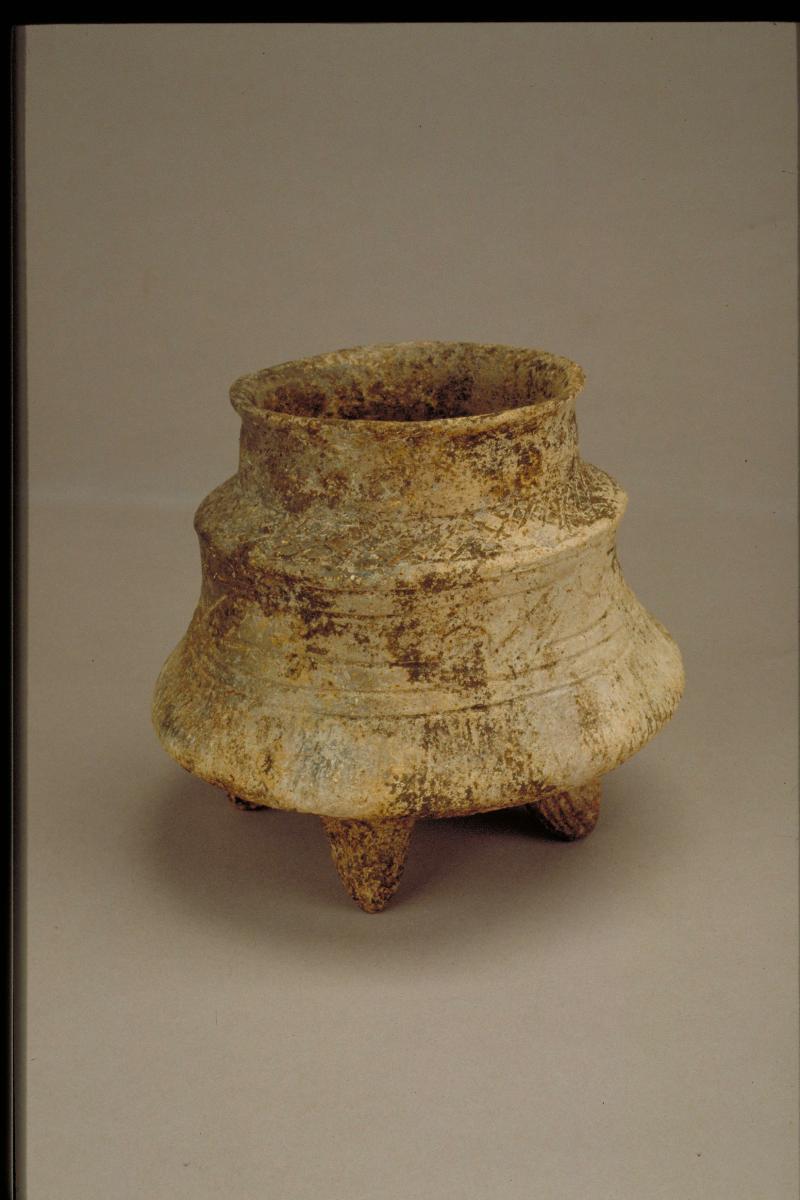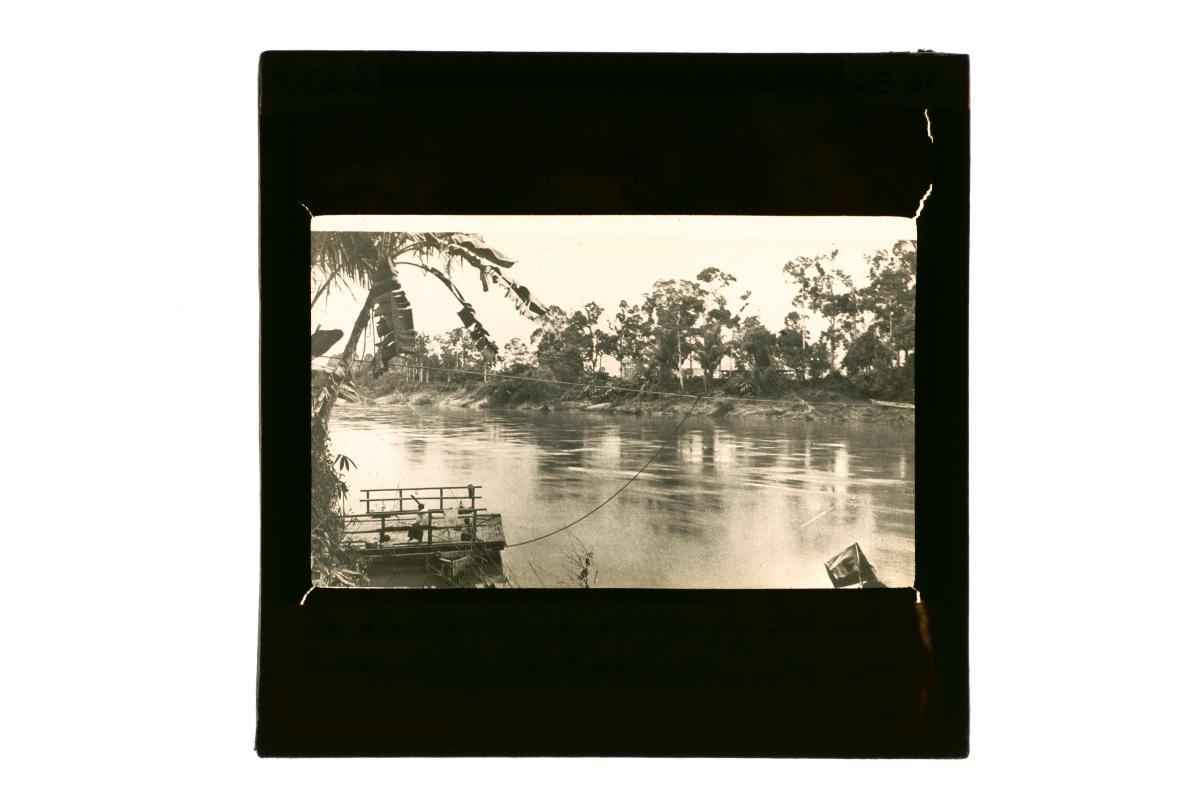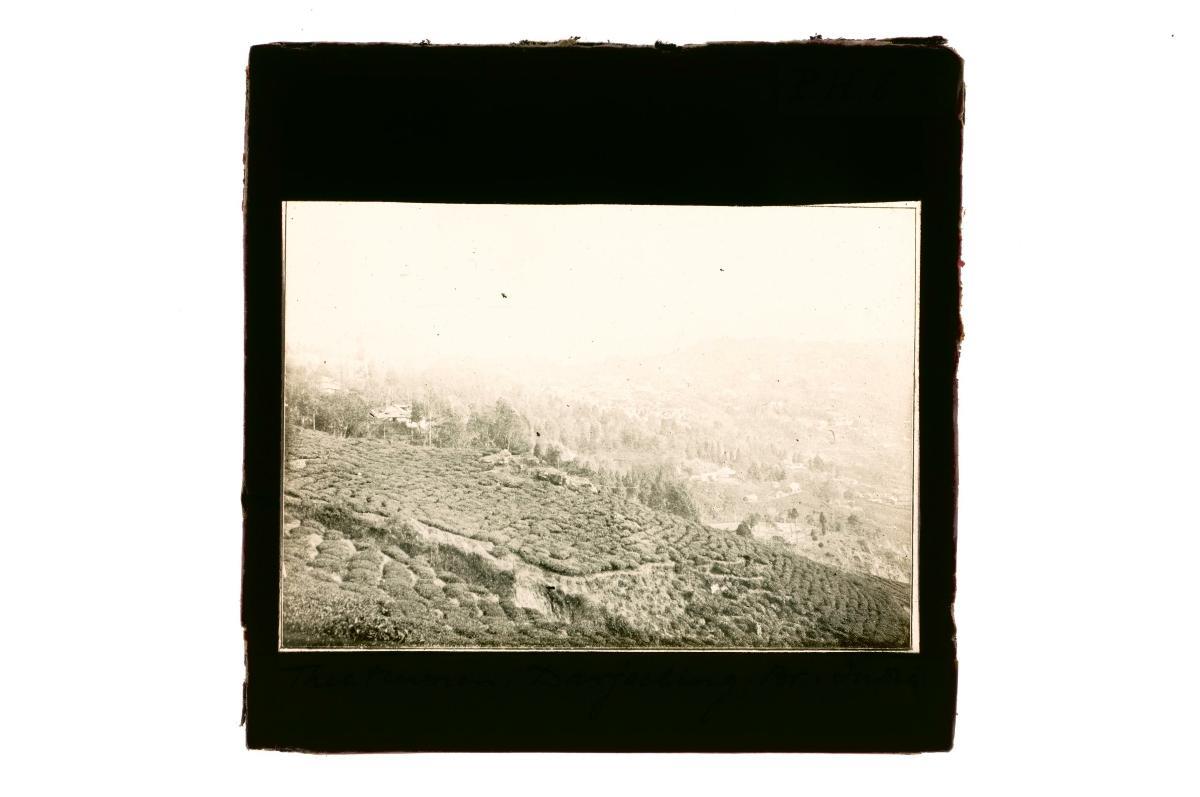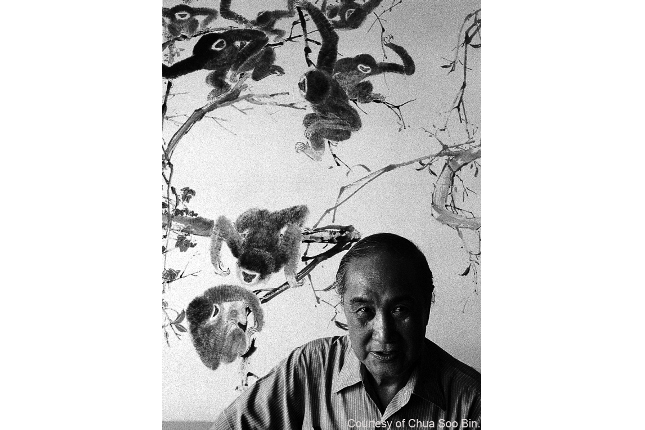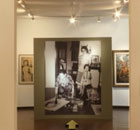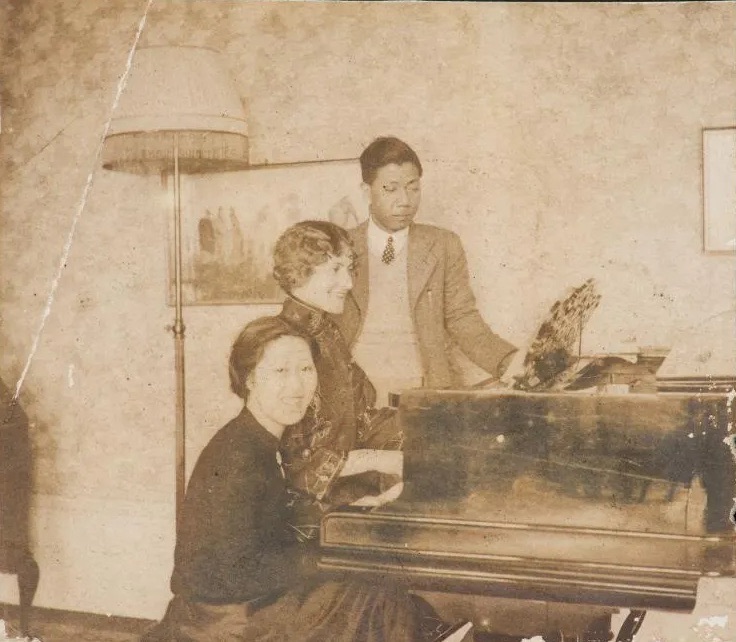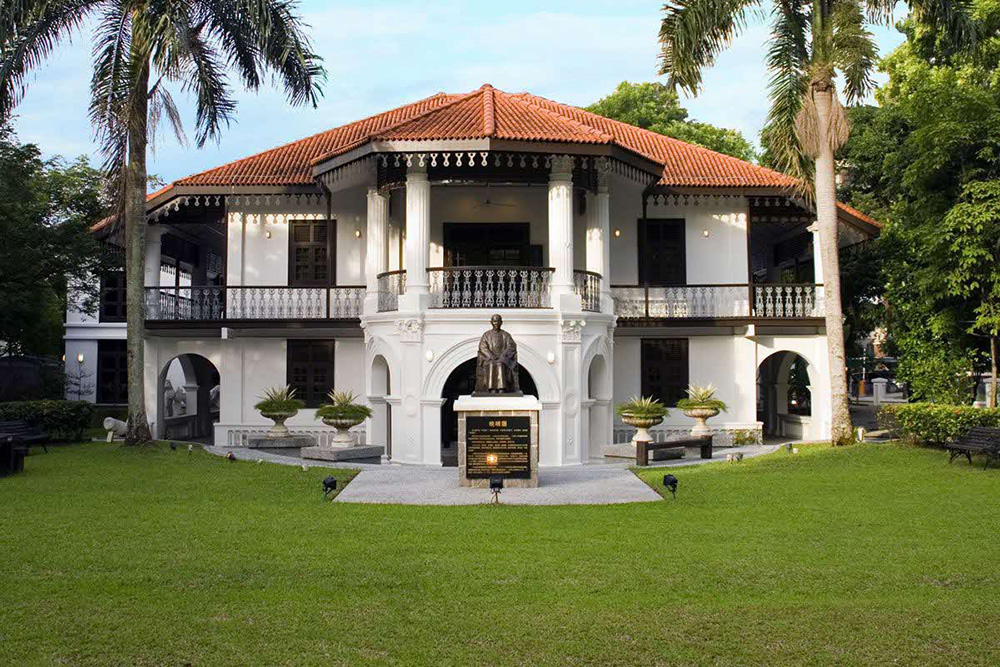This rectangular table would have been part of a group of Ming tomb furnishings. It is covered in amber and green 'sancai' ('three-colour') glaze as well as black pigment. The custom of 'mingqi' or burial ware was an ancient one. It is thought these wares were necessary for the deceased in the next world. Elaborate groups of burial wares were also a display of wealth and social status.The practice of using lead-glazed burial wares had already started during the Han dynasty (206 BCE-220 CE). This glaze technology further developed during the Tang dynasty (618-906) into ‘sancai’ (‘three-colour’) glaze. It included colours such as cream, amber, brown and blue. The glaze tradition continued into the Ming period.




